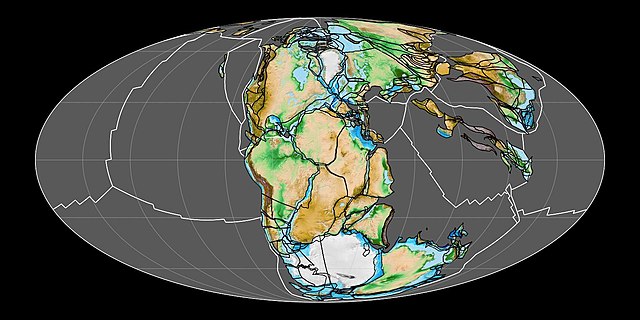Continental drift is the hypothesis, originating in the early 20th century, that Earth's continents move or drift relative to each other over geologic time. The hypothesis of continental drift has since been validated and incorporated into the science of plate tectonics, which studies the movement of the continents as they ride on plates of the Earth's lithosphere.
Abraham Ortelius by Peter Paul Rubens, 1633
Antonio Snider-Pellegrini's Illustration of the closed and opened Atlantic Ocean (1858)
Alfred Wegener
A continent is any of several large geographical regions. Continents are generally identified by convention rather than any strict criteria. A continent could be a single landmass or a part of a very large landmass, as in the case of Asia or Europe. Due to this, the number of continents varies; up to seven or as few as four geographical regions are commonly regarded as continents. Most English-speaking countries recognize seven regions as continents. In order from largest to smallest in area, these seven regions are Asia, Africa, North America, South America, Antarctica, Europe, and Australia. Different variations with fewer continents merge some of these regions; examples of this are merging North America and South America into America, Asia and Europe into Eurasia, and Africa, Asia, and Europe into Afro-Eurasia.
Reconstruction of the supercontinent Pangaea approximately 200 million years ago
The Indian subcontinent
The Ancient Greek geographer Strabo holding a globe showing Europa and Asia
Rigveda page in Sanskrit







